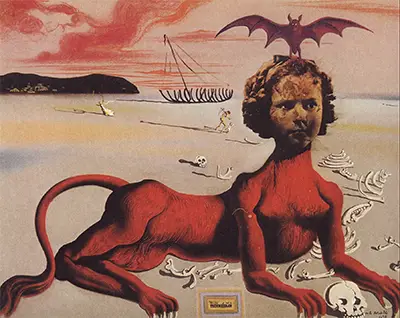At the time of the he produced this artwork, she would only have been eleven years old and the artist was clearly commenting on the treatment of child stars within the US by the media. He was particularly concerned at how these children would be subjected to a form of sexualisation way before it was appropriate and, because of the excitement that surrounded the film industry in the United States, that this was being tolerated by the general public, even enjoyed. The collage element to this creation is in how the artist takes a photograph of Shirley Temple and just makes use of the head itself, adding the rest of the composition himself.
Collage is an art form that we are all particularly familiar with today but was relatively unusual during the late 1930s. It is now seen as a popular artistic form for children and easily allows those without great technical ability to put different images together. Dali himself could of course have painted her portrait using the same oils as used elsewhere in the piece, but wanted to have his own fun with this artwork and also underline his commentary on the press' behaviour, by extracting something physically from their publications. The original piece can now be found at the Museum Boijmans Van Beuningen in Rotterdam, Netherlands. They also possess original artworks from the likes of Pieter Bruegel the Elder (The Little Tower of Babel), Wassily Kandinsky (Reiter (Lyrishes)) and Hieronymus Bosch (The Wayfarer and Nest of Owls).
If we study the composition in more detail, the extracted photograph of Shirley Temple is placed on top of a red lioness, with claws and revealing breasts, which underlines Dali's commentary on the misbehaviour of the press towards child celebrities. A bat can be found on top of her head and this surrealist figure is placed in front of a colourful backdrop of a beach, with a ship in the far background. There is also a tranquil sea front which creeps into the right hand side of the painting. The sky is wildly expressive, with swirling lines of red within an overall cream tone. At the bottom of the painting are the words, "Shirley!. at last in Technicolor".


